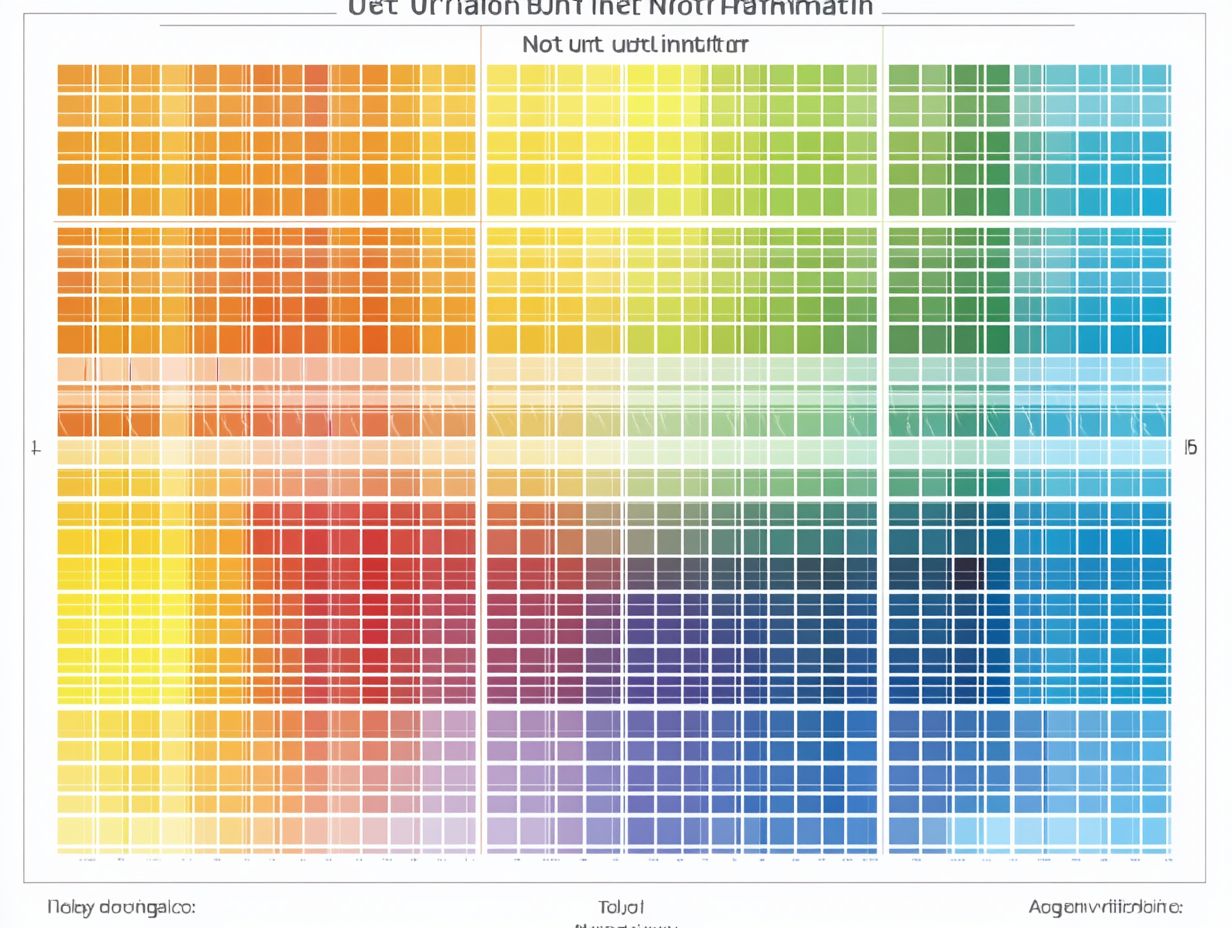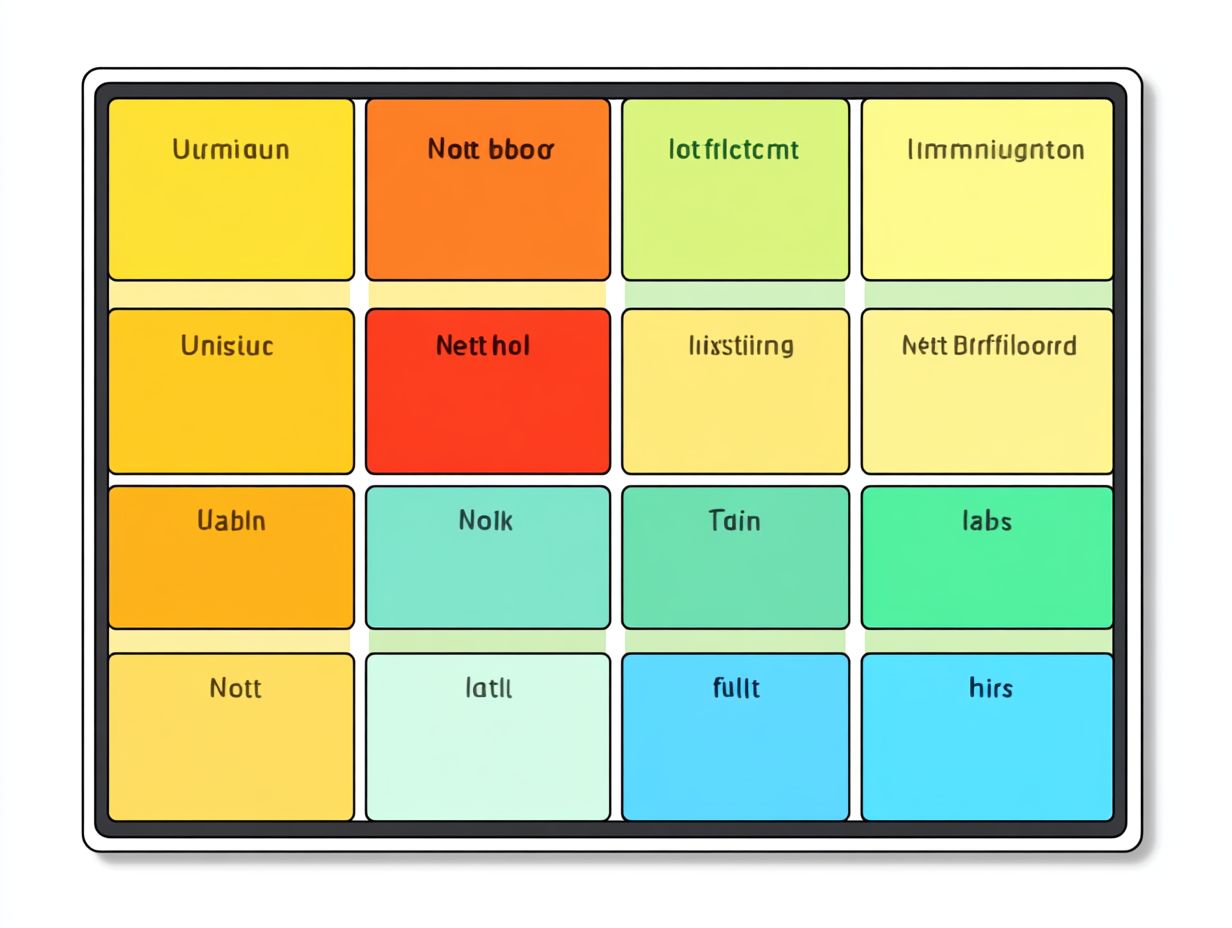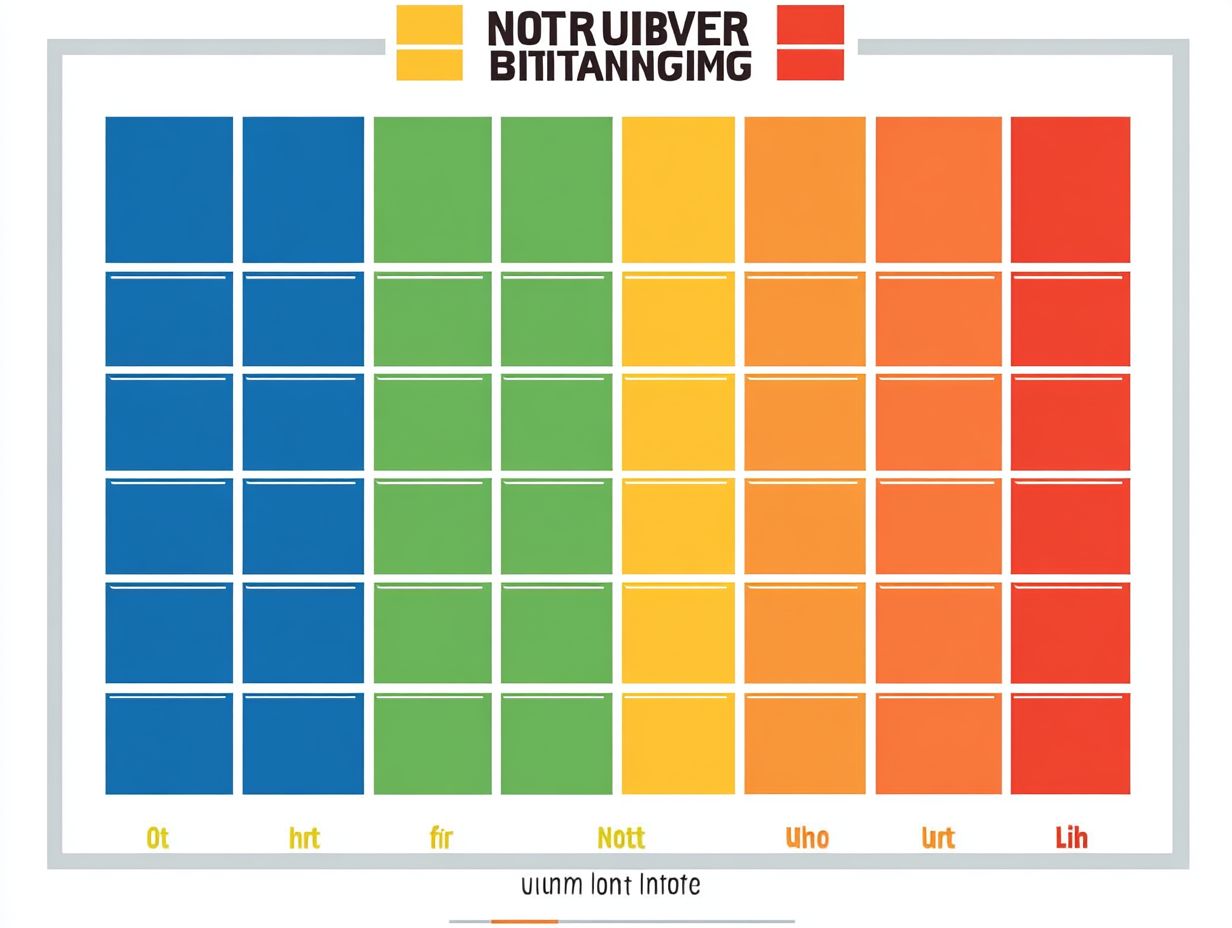Are you feeling overwhelmed by an endless array of tasks and competing priorities? The **Eisenhower Matrix** presents a straightforward yet effective framework designed to assist individuals in identifying what is genuinely important. By categorizing tasks into four distinct quadrants—**Important and Urgent**, **Important but Not Urgent**, **Urgent but Not Important**, and **Not Important and Not Urgent**—users can learn to concentrate on activities that contribute significant value to their lives. This article will examine each quadrant, emphasize the advantages of utilizing the matrix, and offer practical productivity techniques for successful implementation. Discover how this tool can enhance your **time management** skills and increase your **productivity**.
Key Takeaways:
What is the Eisenhower Matrix? A Look at the Eisenhower Principle

The Eisenhower Matrix, named in honor of the 34th President of the United States, Dwight D. Eisenhower, serves as an effective time management tool aimed at enhancing productivity and prioritization of tasks, reflecting the principles of the Quadrants of Quality. This decision-making framework classifies tasks into four distinct quadrants based on their urgency and importance, enabling individuals and professionals to concentrate on what is genuinely significant within their daily workflows.
Through a comprehensive understanding of this matrix, one can improve their time management abilities, minimize unproductive activities, and align tasks with long-term objectives, ultimately leading to greater happiness and fulfillment in both personal and professional development.
Originating during a period when Eisenhower was confronted with numerous short-term problems, this matrix has become an essential component of contemporary productivity methodologies. As noted by respected sources like Inc.com, the matrix complements various time management systems, such as the Pomodoro Technique and Getting Things Done, by offering a clear visual representation of tasks.
For example, a marketing professional might utilize the matrix to assess immediate tasks related to a social media campaign in relation to long-term branding objectives, thereby optimizing their efforts. By regularly evaluating the importance and urgency of tasks, users can foster a proactive approach to decision-making, resulting in enhanced focus and efficiency within their daily routines.
Understanding the Quadrants of the Matrix and Their Impact on Work Strategies
The Eisenhower Matrix comprises four distinct quadrants that classify tasks based on their urgency and importance, facilitating effective organization and prioritization of responsibilities. According to research by Cambridge University, understanding the psychology behind task management, including the smaller tasks trap, can enhance one’s ability to effectively use these quadrants.
Comprehending these quadrants is essential for enhancing productivity habits and making informed decisions regarding the allocation of time and resources.
By differentiating between urgent and important tasks, individuals can avoid a reactive mindset related to short-term problems and instead foster a proactive approach to their daily obligations.
Important and Urgent Tasks
Tasks classified within the ‘Important and Urgent’ category of the Eisenhower Matrix, a quintessential urgent-important matrix, necessitate immediate attention and carry significant repercussions if not addressed in a timely manner. These tasks often include crisis management situations or time-sensitive responsibilities that align with an individual’s personal values and objectives.
Effectively managing these tasks contributes to enhanced productivity and a greater sense of control over one’s workload. Implementing strategies such as prioritization, delegation, and time-blocking can substantially alleviate the stress associated with urgent matters.
In a professional setting, for instance, when an unexpected crisis occurs, a prompt response not only mitigates potential damage but also strengthens trust among team members and stakeholders. Regularly addressing tasks that are both important and urgent cultivates a proactive culture, which can minimize future emergencies and facilitate a more balanced workflow, ultimately aligning better with long-term goals.
Important but Not Urgent Tasks

The ‘Important but Not Urgent’ tasks are essential for achieving long-term goals, as they emphasize personal development activities and strategic planning for future success without the immediate pressure of deadlines.
By intentionally prioritizing these tasks, individuals cultivate a proactive mindset that fosters self-mastery. Such activities may encompass:
- Skill-building workshops
- Strategic networking
- Reflective journaling
All of which significantly contribute to personal growth. According to a recent publication by Asana, these endeavors can profoundly impact one’s ability to achieve big things with long-term goals.
This method not only aids in clarifying long-term vision but also nurtures the discipline required for sustained motivation. Over time, these cumulative efforts can yield substantial rewards, facilitating more effective decision-making and a deeper understanding of one’s objectives.
Therefore, by consistently allocating time to these non-urgent priorities, individuals position themselves for lasting success and fulfillment.
Urgent but Not Important Tasks
Tasks classified as ‘Urgent but Not Important’ may require immediate attention yet do not significantly contribute to personal or professional growth. Engaging in such tasks often results in busy work that diverts focus from activities of greater value.
To effectively manage these tasks, it is essential to implement strategies that prioritize impactful activities while reducing involvement in non-essential duties.
Delegation is a key component of this approach; by entrusting responsibilities to competent team members, individuals can concentrate on high-priority objectives that facilitate professional growth and advancement.
Regular evaluation of responsibilities is crucial, allowing individuals to differentiate clearly between genuinely essential tasks and those that are merely perceived as urgent. Recognizing the appropriate moments to withdraw from busy work enables a more strategic allocation of time and energy, ensuring that attention is directed toward activities that genuinely promote growth and development.
Not Important and Not Urgent Tasks
The tasks categorized as ‘Not Important and Not Urgent’ often represent activities that can be eliminated or minimized from one’s schedule, as they serve as busy work distractions that do not contribute to personal values or professional growth.
By recognizing and categorizing these tasks, individuals can reclaim substantial time that would otherwise be squandered, allowing for increased focus on activities that genuinely matter.
Implementing effective methods for task organization, such as prioritizing responsibilities through the Eisenhower Matrix, can aid in streamlining workloads and identifying essential goals.
Utilizing digital tools for task planning ensures that attention is directed toward high-impact activities, ultimately enhancing overall productivity and workload management.
Furthermore, adopting time-blocking techniques allows individuals to designate specific periods for meaningful work, aligning daily activities with broader aspirations.
In this manner, individuals can transform their daily agendas to better reflect their personal values, thereby fostering a fulfilling and purpose-driven life.
Benefits of Using the Eisenhower Matrix in Task Management

The utilization of the Eisenhower Matrix offers numerous advantages, including enhanced time management and increased productivity.
This tool serves as a clear decision-making framework that assists individuals in effectively prioritizing their tasks within their daily workflow.
Improved Time Management
Improved time management through the implementation of the Eisenhower Matrix enables individuals to concentrate on high-impact tasks while minimizing distractions, thus effectively managing their daily responsibilities.
By categorizing tasks into four quadrants—urgent and important, important but not urgent, urgent but not important, and neither urgent nor important—this method facilitates strategic prioritization of efforts. Individuals who adopt this systematic approach can accurately identify what is truly significant within their to-do lists.
To further enhance productivity, individuals may consider employing various techniques, such as:
- Setting specific time blocks for focused work,
- Utilizing the Pomodoro Technique to sustain momentum, and
- Regularly reviewing their goals to ensure alignment with long-term objectives.
Additionally, emphasizing the importance of delegation and declining non-essential commitments can significantly free up valuable time.
Increased Productivity
By adopting the Eisenhower Matrix, individuals can enhance their productivity by transitioning from a reactive mindset to a proactive approach, which facilitates more effective task analysis and completion, optimizing mental space.
This framework enables users to categorize their tasks into four distinct quadrants, thereby clarifying which activities are urgent and important compared to those that can be delegated or scheduled for later.
For instance, an individual faced with multiple deadlines can prioritize critical projects, ensuring that significant tasks are accomplished without unnecessary stress.
By concentrating on what truly matters, individuals can develop improved time management skills, thereby reducing the mental clutter often associated with overwhelming task lists, a crucial aspect of task prioritization and goal setting.
This method not only promotes efficiency but also enables individuals to take decisive actions, ultimately leading to greater satisfaction and achievement in both their personal and professional lives.
How to Implement the Eisenhower Matrix

The effective implementation of the Eisenhower Matrix, a decision-making tool inspired by Dwight D. Eisenhower, necessitates a systematic approach to task organization, enabling individuals to categorize their responsibilities according to urgency and importance.
Step-by-Step Guide
A systematic approach to implementing the Eisenhower Matrix begins with compiling a comprehensive list of all tasks. This is followed by categorizing these tasks into the appropriate quadrants based on their urgency and importance.
This method encourages individuals to adopt a holistic perspective regarding their responsibilities, ensuring that no critical tasks are overlooked.
After listing the tasks, they should be classified into four distinct quadrants:
- urgent and important,
- important but not urgent,
- urgent but not important, and
- neither urgent nor important.
Each quadrant serves a specific purpose, guiding users in prioritizing effectively. The first quadrant requires immediate attention, while the second emphasizes long-term objectives, enabling users to allocate their time and resources appropriately. The third quadrant assists in identifying distractions that can be delegated, while the final quadrant often highlights tasks that can be eliminated entirely, thereby promoting a productive work environment.
Tips for Success with the Eisenhower Matrix
Achieving success through the utilization of the Eisenhower Matrix necessitates the incorporation of effective time management strategies, task management tools, and productivity tips.
These elements are essential for maintaining focus and effectively accomplishing personal goals, aligning with life values and self-mastery activities.
Effective Time Management Strategies
Effective time management strategies, such as prioritizing tasks using the Eisenhower Matrix and task analysis, can significantly improve workload management and enhance overall productivity.
By categorizing tasks into quadrants of urgency and importance, individuals can readily identify which matters require immediate attention and which can be scheduled for later, following the task categorization method.
Plus this methodology, techniques such as the Pomodoro Technique promote focused work sessions followed by brief breaks, thereby helping to prevent burnout and sustain high levels of concentration.
Utilizing tools such as digital calendars or task management applications can assist in visualizing deadlines and tracking progress, ensuring that critical deadlines are met without causing undue stress, a practice endorsed by Stephen Covey.
Furthermore, establishing SMART goals—Specific, Measurable, Achievable, Relevant, and Time-bound—can provide clarity and motivation, facilitating the successful completion of tasks and addressing long-term payoffs and planning and prevention.



